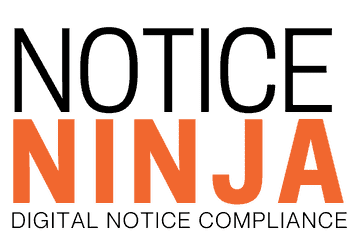Yes, NOTICENINJA is corporate tax notice compliance software that automates key workflows including notice assignments. The platform employs a rule-based system that can manage multiple level rules and ensure notices are directed to the appropriate stakeholder. As a result, you’ll never have to worry about notices being misdirected or slipping between the cracks.

The Compliance Cost Curve in Asset Management

21 August
Rising Costs, Rising Risks
Asset managers are facing a reality check. As AUM grows and private markets expand, the number of tax notices and regulatory filings is climbing. Headcount and budgets, however, are staying flat. The result is a compliance cost curve that keeps getting steeper.
Some firms try to manage the surge in notices by adding outside vendors or contractors. This can provide short-term relief, but it often introduces new challenges. Turnaround times slow down, visibility is reduced, and multiple people may touch the same work. The real issue is that there is no single, system-driven process to create efficiencies and integrate with existing tax operations.
The Limits of OCR
Some tax departments tried to get ahead by digitizing notices with OCR technology. This seemed like progress. But OCR only converts paper to text. It does not classify, assign, or close out compliance tasks. Staff still spend thousands of hours tagging, routing, and reconciling notices across entities.
In practice, OCR-based workflows create a false sense of automation. Firms still face delays of 24 hours or more before notices are fully processed, while costs continue to mount. When volume spikes — such as during acquisition cycles or state-level backlogs — OCR is quickly overwhelmed.
The AI and Automation Advantage
Artificial intelligence and workflow automation move beyond OCR. Leading firms are now:
- Classifying notices instantly by jurisdiction, type, and urgency
- Routing notices directly to the right stakeholder or provider
- Tracking deadlines with alerts and escalation rules
- Generating audit-ready reports across dozens of entities
Instead of chasing notices, tax leaders are flattening their compliance cost curve.
One global firm described the tipping point clearly: hundreds of seasonal staff were brought in offshore just to manage backlogs of thousands of state notices. The expense was staggering, and the security risks of giving access to sensitive data were real. What automation offers is a chance to eliminate both costs and risks permanently.
The Hidden Costs of Delay
Every missed notice deadline compound risk. Even a small backlog can lead to penalties, audits, and reputational damage. EY’s 2024 Tax Technology Survey found that firms without integrated automation spend an additional 2,000 staff hours per year managing notices. Deloitte reports that 64 percent of tax leaders now cite compliance cost escalation as a top three operational risk.
Backlogs also distort operations in less visible ways. Some firms are hit with “mistake repair” batches, where a state agency reissues thousands of notices due to system errors. Without automation, these duplicates bury teams and delay resolution of legitimate issues. Other firms struggle with tracking refund checks, credits, and amended returns, losing opportunities to reclaim cash because notices and refunds are never reconciled.
The cost curve is not just about penalties. It is about wasted hours, duplicate work, and missed opportunities that quietly erode margins.
Flattening the Curve
The solution is clear. OCR alone will not flatten the compliance cost curve. AI-powered automation, combined with centralized workflows, reduces notice processing times by as much as 50 percent in the first 30 days. The payoff is more than efficiency. It is the confidence that operations are audit-ready and scalable.
One asset manager recently reduced a backlog of over 4,000 notices within a single quarter by implementing AI-driven workflows. Training began with the firm’s own notice history, which accelerated adoption and delivered measurable ROI in weeks, not months.
Next Step: Test Your Readiness
Managing notices, refunds, and filings across a portfolio of entities is complex. Gaps are often invisible until penalties or audits appear. That is why we created the Private Equity Compliance Audit.
This quick assessment helps you answer critical questions:
- Do you have a centralized system to track all notices?
- Are workflows automated for timely resolution and escalation?
- Can you match refund checks and carryforwards to notices?
- Do you have visibility into compliance KPIs by jurisdiction or entity?
Download the Private Equity Compliance Audit to evaluate your operations and uncover opportunities to reduce risk and flatten your compliance cost curve.
RELATED POSTS
- Top 3 Tax Notices Private Equity Firms should Know
- Private Equity Guide to Handling Tax Notices Effectively
- Taming the Tax Notice Beast: How Automation Can Streamline Your Private Equity Tax Operations
